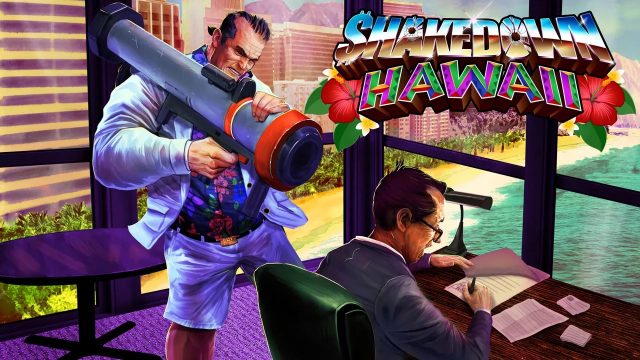


To give it the best chance of getting greenlit under such a tight timeframe, I had to work fast. After all, the Wii U still supported Wii Remotes, Wii Classic Controllers, and even 4:3! So, I rushed against time to port Shakedown: Hawaii to Wii U as well, and get it through certification before that door could close too. The clock was ticking, and after exhausting all other options, I decided to pivot to the next best thing: the Wii U. Although I continued talks with NOA, floating around a Plan B, Plan C. It's meant the world to me, and these Wii discs specifically hold an immense place in my heart.Īs incredibly as it all worked out, unfortunately, Wii discs aren't region-free, and I didn't want North American players to be left out. Words truly can't express how appreciative I am, and I can't thank them enough for all the heavy lifting they did on their end to make it a reality. However, rather than giving up, I decided to reach out to Nintendo of Europe as well, and to my surprise, they said yes, and allowed it to squeeze through before that door closed too. Indeed, despite my best efforts, it just wasn't in cards anymore, at least, not for North America. It can be played entirely on the GamePad, with touch control.Īctually releasing a game on the Wii in 2020 is harder than you might imagine, as Vblank's Brian Provinciano explains:Īlthough we've still seen some Wii releases over the past few years, seeing one more wasn't a given.
SHAKEDOWN HAWAII XBOX ONE PRO
Interface-wise, you're looking at the Wii U GamePad, Wii U Pro Controller, Wii Remote, Wii Classic Controller, or Wii Classic Controller Pro. And something tells me those questions aren’t here by design.For those interested in the Wii U version, it offers both SD and HD modes with 4:3 and 16:9 aspect ratios. But once you stop to think about all the other parts of the game, you’re confronted with some uncomfortable questions. And I’d be lying if I said I didn’t have a great time mindlessly bouncing around and causing as much destruction as I could. The game treats all targets as worthy of getting hit, the more damage done, the more points earned. That attitude extends past the gameplay and into the writing. You play as characters who punch everyone and increase your points, regardless of who is getting hit. Which sort of describes the game in a nutshell. Shakedown: Hawaii does quite a bit of both. Because without the specificity of a certain perspective or experience, that sort of generalization can feel like punching down taking refuge in the confidence and safety you feel from your standing in the culture. It’s why a man making generalizations about women often resorts to self-deprecation. It’s what makes the government such a good target for jokes. When you punch up you are targeting people, ideas, and systems higher up in the power structure. In comedy, there’s the concept of punching up and punching down. The police are all brutal idiot pigs, and criminals are a bunch of gross scumbags. There’s venom saved for game show hosts, game show contestants, and the people who watch game shows. It also has it out for lazy young people who just want handouts from their parents which they blow on sneakers they don’t need. The game has it out for corporations and the empty suits who run them. And Shakedown: Hawaii has it out for everyone. One of the ones where you were still in the big city, but you had to shoot poop and the enemy buildings. Not the later ones that went completely off the rails with aliens and presidential elections. On one level it kind of feels like a Saints Row game. Shakedown: Hawaii doesn’t take itself seriously. It combined an addictive mobile-like game with aesthetic customization options, RPG leveling up, and amazing conversation pieces. I found myself getting lost in the cabaret minigame in Yakuza 0 for hours. But while the combat side of things is stupid and engagement, the management side is less gripping.


 0 kommentar(er)
0 kommentar(er)
